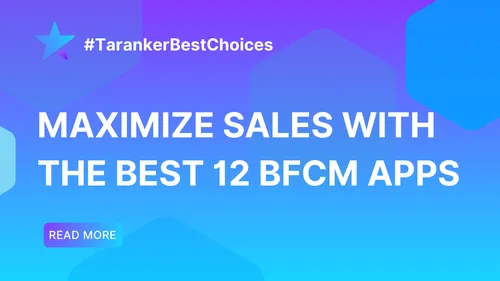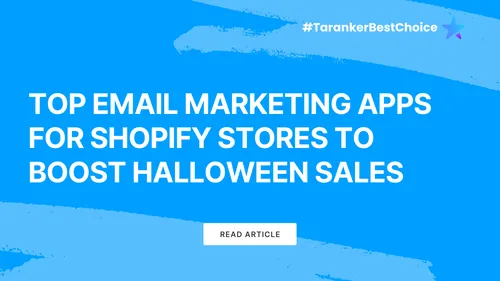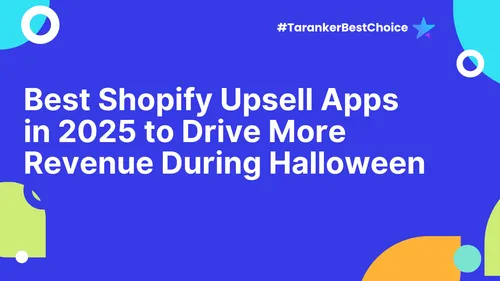Pricing is one of the most important aspects of your ecommerce business. Getting your pricing strategy right can make or break your profitability, and dynamic pricing has emerged as a powerful way to optimize prices in real-time. A 2019 study by McKinsey found that dynamic pricing can increase revenues by 25% by adjusting to market conditions and customer demand.
Dynamic pricing allows you to adjust prices based on factors such as customer behavior, competitor pricing, demand, and market trends. However, this flexibility comes with challenges, as it can also lead to customer confusion and frustration if not done correctly.
In this blog, we’ll cover 5 dynamic pricing strategies that can help your ecommerce brand stay competitive, increase profits, and enhance customer satisfaction. These strategies will provide you with actionable steps to implement dynamic pricing in a way that is effective and customer-friendly.

1. Time-Based Dynamic Pricing: Capitalizing on Peak Demand
1.1. What is Time-Based Dynamic Pricing?
Time-based dynamic pricing adjusts your prices based on time-sensitive events like seasonal demand, holidays, or product launches. During high-demand periods, such as the holiday season or a flash sale, businesses can increase their prices to capitalize on the demand. Conversely, during off-peak times, prices can be reduced to stimulate interest.
1.2. How to Implement Time-Based Dynamic Pricing
To implement time-based dynamic pricing, follow these steps:
-
Identify peak periods: Look at past data to determine when demand for your products spikes (e.g., Black Friday, Christmas, or back-to-school season).
-
Set price rules for these periods: Increase prices by a fixed percentage or amount during peak seasons. You can use tools like Shopify’s Dynamic Pricing App or Prisync to automate price changes based on pre-determined dates.
-
Monitor sales and demand trends: Use your sales data to predict future demand periods and adjust prices accordingly.
Example: If you're selling winter jackets, increase prices in the fall when demand begins to rise. Use dynamic pricing to automatically raise prices by 10% during the winter season and lower them in spring to clear out inventory.

2. Competitor-Based Dynamic Pricing: Staying Ahead in Competitive Markets
2.1. What is Competitor-Based Dynamic Pricing?
Competitor-based dynamic pricing involves adjusting your prices based on the prices of your competitors. If a competitor lowers their prices, you can immediately lower yours to stay competitive, or vice versa. This strategy is useful in highly competitive industries where customers often compare prices before making a purchase.
2.2. How to Implement Competitor-Based Pricing
To implement competitor-based pricing:
-
Monitor competitor prices regularly: Use pricing tools like Pricefx or Skuuudle to track competitor prices in real-time.
-
Set automatic adjustments: Once you’ve tracked competitor prices, you can create rules that allow your prices to adjust automatically based on competitor actions.
-
Ensure profitability: While you should stay competitive, make sure your pricing adjustments don’t lead to undercutting your profit margins.
Example: If your competitor sells the same smartphone for $300, and they lower the price to $275, use dynamic pricing to adjust your price to $274 to stay competitive while maintaining your margin.
3. Demand-Based Dynamic Pricing: Adjusting Prices Based on Supply and Demand
3.1. What is Demand-Based Dynamic Pricing?
Demand-based pricing allows you to raise or lower prices based on demand fluctuations for your products. When demand is high (e.g., during holidays or special events), you can increase prices. Conversely, when demand is low, you can decrease prices to drive sales.
3.2. How to Implement Demand-Based Pricing
To implement demand-based pricing, you need to:
-
Track real-time demand: Use data analytics and market research to predict demand surges for specific products.
-
Set price floors and ceilings: Define minimum and maximum price ranges so that prices never fall below a certain point or rise too drastically.
-
Use automated pricing tools: Use tools like Prisync or Pricefx to automatically adjust prices based on demand signals.
Example: A concert ticket vendor might use dynamic pricing to adjust ticket prices as demand increases. During early ticket sales, the prices could be lower, and as the event approaches and fewer tickets remain, prices increase.

4. Personalized Dynamic Pricing: Tailoring Prices to Individual Customers
4.1. What is Personalized Dynamic Pricing?
Personalized dynamic pricing involves adjusting prices based on individual customer behavior, browsing history, or purchase frequency. This strategy allows businesses to offer personalized discounts or pricing to different customer segments based on their loyalty, location, or previous purchases.
4.2. How to Implement Personalized Pricing
To implement personalized pricing:
-
Segment your customers: Use customer data to create segments based on purchasing behavior, browsing activity, or location.
-
Set pricing rules for each segment: Offer exclusive discounts to loyal customers or those who have a high lifetime value.
-
Automate pricing: Use tools like Klaviyo or Shopify Plus to automate pricing adjustments for different customer segments.
Example: A fashion retailer might offer returning customers a special discount, while new visitors might see a slightly higher price or be prompted with an upsell offer.
5. Inventory-Based Dynamic Pricing: Optimizing Prices for Stock Levels
5.1. What is Inventory-Based Dynamic Pricing?
Inventory-based dynamic pricing adjusts prices based on your product’s stock levels. If stock levels are low, prices increase to maximize revenue before stock runs out. If stock levels are high, prices can decrease to clear out excess inventory.
5.2. How to Implement Inventory-Based Pricing
To implement inventory-based pricing:
-
Track your inventory in real-time: Use tools like Shopify's inventory management system to monitor stock levels.
-
Set automated rules for price increases as stock runs low and price decreases as excess inventory needs to be cleared.
-
Use demand forecasting tools to predict sales and adjust inventory levels proactively.
Example: If a product like Bluetooth headphones is down to the last 20 units, you can automatically increase the price by 15% to capitalize on demand. Once the inventory level reaches a certain threshold, the price will decrease to move the remaining stock.
Conclusion:
Dynamic pricing is a powerful tool for ecommerce brands that want to stay competitive, increase revenue, and respond quickly to market changes. By implementing strategies such as time-based pricing, competitor-based pricing, and demand-based pricing, businesses can optimize their prices to maximize profits.
However, dynamic pricing must be done carefully to avoid customer frustration and maintain trust. Be transparent with your pricing strategy, use automation tools to make the process more efficient, and consistently monitor customer feedback to ensure you’re offering a fair and competitive pricing experience.
By leveraging these 5 dynamic pricing strategies, ecommerce brands can increase profitability while ensuring customer satisfaction, creating a more responsive and competitive pricing structure. Start implementing these strategies today to see tangible results and drive growth for your business.













